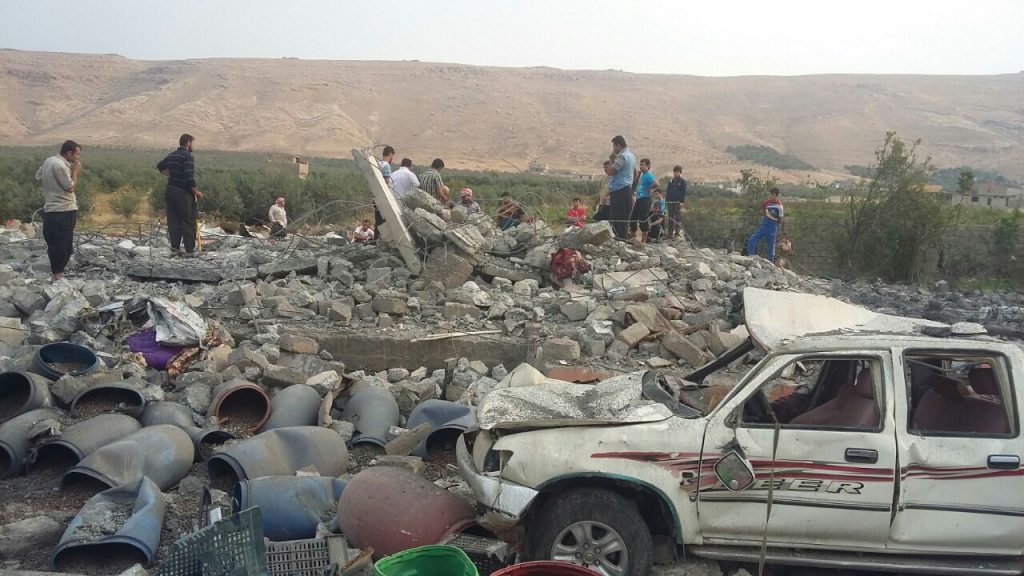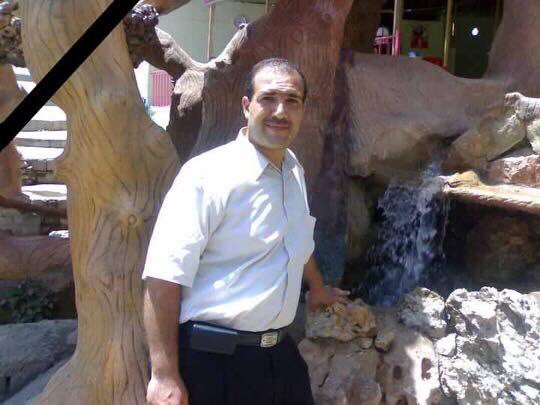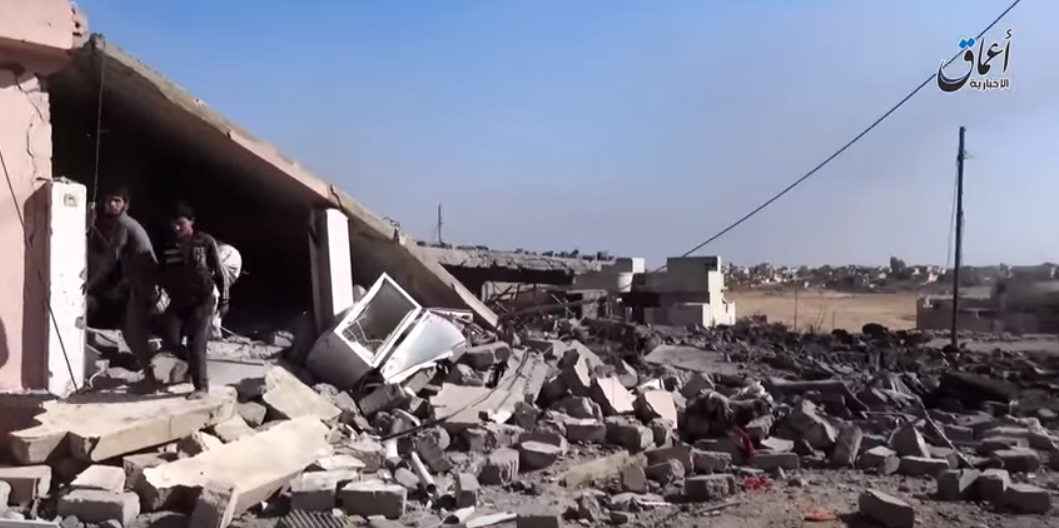Civilians in Mosul are at risk from airstrikes, mortars, artillery and street battles as struggle for control continues

Hundreds of civilians have already been credibly reported killed in the ongoing battle to recapture Mosul from Islamic State fighters, according to an Airwars assessment – slain by airstrikes, mortar and artillery fire, and in street battles.
Airwars’ Iraq researcher has travelled to the frontlines regularly during the past seven weeks. He reports an increasingly dire situation, as tens of thousands of civilians flee Mosul, and ISIL shelling intensifies. Since November 20th alone, he estimates that more than 100 civilians may have been killed in fighting. The Washington Post meanwhile has reported that the number of civilian victims may be as many as 600 since mid-October, according to one of its sources.
“ISIL is using new tactics, targeting liberated areas of the city, street by street, and targeting main squares in liberated neighborhoods” said Airwars’ Iraq researcher, referring to the terror group’s use of mortars. “I think that will stop or delay Iraqi army offensives.”
In addition, airstrikes appear to have led to dozens of civilian deaths since October 17th. Through November 30th, Airwars has recorded a total of 41 alleged Coalition civilian casualty incidents in and around Mosul. Between them these claim as many as 318 civilian deaths. After reviewing and grading each incident, researchers at Airwars believe the likely civilian toll from Coalition airstrikes and artillery during the battle for Mosul presently stands at 98 to 101 killed – with 202 injured – including eight deaths so far conceded by the US.

Dr. Safwan Imad, reportedly killed in an air raid on his neighborhood in Mosul on November 16th. Courtesy of @othmanmhmmadr.
At the outset of the Mosul assault, Coalition commander Lt. Gen Stephen Townsend said the battle would likely continue for weeks. Iraqi officials now hint the campaign may take six months. On November 30th they claimed that some 19 neighborhoods – representing about 30 percent of the eastern side of Mosul – had been recaptured since Coalition-backed operations began on October 17th. But gains have slowed significantly during November.
Iraqi officials, for their part, say they are going slower to prevent civilian deaths. But they have also sent conflicting messages to locals caught in the crossfire, first instructing them to stay in their homes (evidently in the hope they would revolt against ISIL), only to later reconsider that advice as casualties grew and progress into the city slowed in densely populated areas. According to the UN more than 77,000 people have so far been displaced by fighting; humanitarian officials say they are still unprepared for a massive exodus of a half million or more Mosul civilians.
Litany of ISIL crimes
UN human rights monitoring seen by Airwars shows a litany of ongoing crimes committed by ISIL fighters. Doctors and elderly Moslawi killed by snipers; children shot down as they attempt to flee towards Iraqi Security Forces (ISF); car bombs claiming civilians in residential areas.
The deadliest weapon used by ISIL continues to be indiscriminate shelling, especially in areas recaptured by Iraqi Security Forces (ISF.) On November 17th, 31 civilians, including eight children were reportedly killed when ISIL shelled the government-controlled neighborhood of al-Bakir. Another attack in eastern Mosul on November 23rd, reportedly claimed the lives of 11 civilians, including 4 women and 2 children.
The US-led Coalition, which has bombed ISIL targets in Iraq for more than two years, has intensified its campaign in and around Mosul. Through November 28th, the Coalition reported 212 separate strikes in support of operations to recapture the city. A strike as defined by the Coalition ranges from a single bomb dropped by a jet to multiple planes partaking in a raid or unleashing sustained fire.
Prior to October, Mosul was already the site of more than 400 likely civilian deaths from Coalition airstrikes, according to the best estimates of Airwars researchers. This was the highest figure for any location across Iraq and Syria. In previous investigations, relatives of those inside the city described a constant barrage of rockets and bombs that rained down on the city from November 2014. That pace has only increased since October 17th. According to the Coalition, more than 4,900 munitions have been “delivered” in support of the Iraqi operation to recapture Mosul.
Airwars’ Iraq researcher reports that US attack helicopters were also being used more heavily towards the end of November, as close quarter fighting rendered airstrikes less effective and more deadly to civilians.

A 10-year old boy injured in fighting in Mosul’s Shishan neighbourhood on November 14th 2016 (Airwars photo)
“That move into an urban environment means that the tempo of our strikes is generally going to decrease,” Coalition chief spokesman Colonel John Dorrian told Airwars in a recent interview. ‘That’s because you have to be more careful and you probably will see fewer opportunities to take that shot against an enemy.”
Dorrian added that Coalition members may elect to use small munitions as the operation intensifies, moving from 2,000 pound bombs to ones weighing several hundred pounds. “Obviously as you get into the urban environment it is appropriate,” he said.
Eight deaths admitted
The Coalition has so far admitted to just eight civilian deaths from its Mosul campaign – all in a bombing that took place on October 22nd in Fadhiliya, outside Mosul, which killed an entire family. Iraq-based reporter Fazel Hawramy had obtained eyewitness testimony, published in the Guardian, which brought the attack to the attention of Coalition officials.

Bodies of a family of eight are removed from the rubble of their home in Fadhiliya, Iraq following a confirmed Coalition airstrike on the evening of October 22nd 2016 (Picture courtesy of Fazel Hawramy)
Other civilian casualty incidents, particularly those inside ISIL-controlled neighborhoods of Mosul, do not benefit from similar in-depth reporting. Accounts that do emerge may include information or video from ISIL-controlled outlets.
On November 18th, at least seven civilians were reportedly killed and 14 injured in what local accounts reported as Coalition bombings, though other accounts only referred to as “heavy shelling.” Though initial reports cited ISIL-linked sources, Airwars researchers were able to find additional reports that also blamed the Coalition.
In other cases, a single report – even if from a highly credible source – can be insufficient to determine what occurred. On November 13th, the Norwegian Refugee Council tweeted that a father told them “3 family members were killed” and a mother and 2 children badly burnt when their home in eastern Mosul was shelled. It is unclear who was responsible. A number of other events have been also been reported by word of mouth to Airwars, either by Iraqi forces or by affected civilians.
Though the UN monitors civilian casualties, it generally does not assign blame for airstrikes – leaving it unclear if an attack is carried out by the Coalition or the Iraqi Air Force. Some incidents – like an October 21st bombing that killed 15 women in Duquq (south of Kirkuk) were originally blamed on the Coalition but later linked to the Iraqi Air Force. Recent attacks in Tal Afar – carried out as part of the Mosul campaign – have also seen blame contested between the Coalition and Iraq government.

A father and his seven children were reportedly killed in this incident near Mosul on October 24th by an alleged Coalition strike (still from Al A’Amaq propaganda video, via Youtube)
Given reporting limitations, international monitors meanwhile have had difficulty in evaluating more than a handful of cases. Human Rights Watch recently released an investigation into an October 18th bombing south of Mosul that left eight civilians dead. The airstrike targeted ISIL, who had commandeered a medical clinic in the town of Hammam al-Alil. The precision attack also killed two ISIL fighters, as well as its transport minister. Human Rights Watch has called on both the Iraqi government and the Coalition to investigate.
Belkis Wille, Iraq researcher at Human Rights Watch, said investigations are exceedingly challenging in and around Mosul right now: “Because of the different types of attacks being carried out by ISIS, Iraqi and KRG forces, and the Coalition, it is extremely difficult for human rights workers to identify why a civilian was wounded or died during the course of the battle,” Wille told Airwars.
“In addition, even where we can, because of the dangers of working along the frontline, it is very difficult for us to identify whether there was a legitimate military target in the area, and therefore whether the attack was lawful or not.”
Difficulties in tracking casualties and those responsible could not come at a worse time for civilians in both Iraq and Syria. According to Airwars researchers, November saw record number of civilian casualty claims involving both the US-led Coalition, and Russian forces operating in Syria.